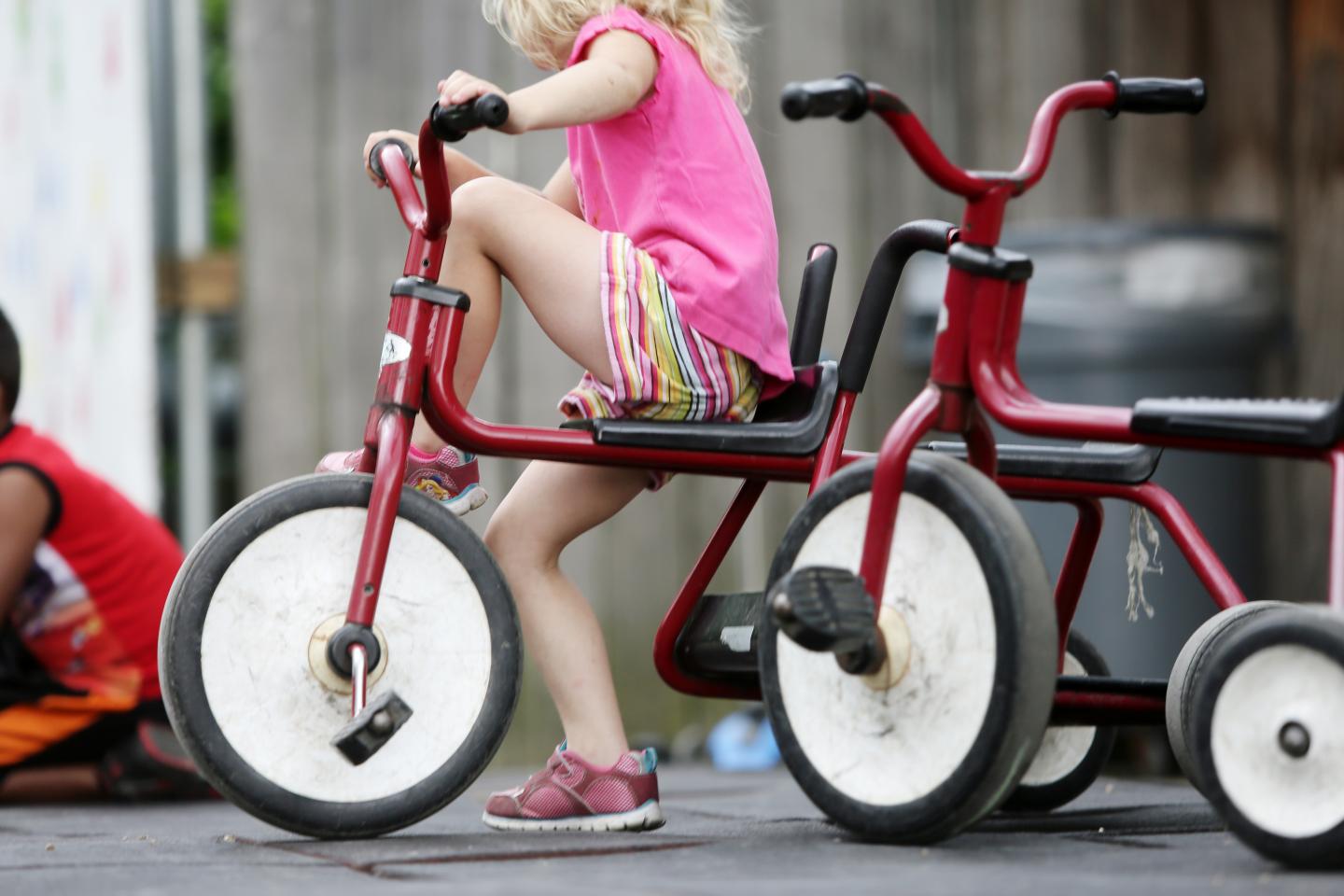
A new study published in the American Journal of Preventive Medicine finds child care centers play a pivotal role when it comes to the physical activity levels of preschoolers. Yet few children get to experience outdoor recess time as it is scheduled. Only 3 in 10 children had at least 60 minutes of a full child-care day outdoors for recess, as is recommended by guidelines.
The amount of outdoor time while at child care was the only factor that predicted the total amount of physical activity children obtained over the full 24-hour day.
The Preschool Eating and Activity Study (PEAS) found that children in child care centers with at least 60 minutes of outdoor time were more active over 24 hours than children that did not get this time.
"These opportunities may be especially important for children who lack opportunities to be active at home," said Kristen Copeland, MD, a researcher in the Division of General and Community Pediatrics and senior author of the study. "That's why what happens in the child care centers has important and lasting effects for children's total daily levels of activity."
Researchers at Cincinnati Children's Hospital Medical Center studied 380 children ranging in age from 3 to 6-years-old enrolled at 30 different child care centers from November 2009 through January 2011.
Ninety percent of those centers reported scheduling two or more outdoor sessions daily, yet only 40 percent of children had taken part. Thirty-two percent had no time outdoors.
"We know daily physical activity is essential for children's growth and development. It improves cardiovascular and bone health and has been linked to improved mood, attention, and cognitive performance," said Dr. Copeland. "Yet, few preschoolers are meeting daily physical activity recommendations of 60 minutes or more per day."
The Preschool Eating and Activity Study (PEAS) is the first study to examine center influences on children's physical activity over the full 24-hour day and over a wide range of weather conditions.
"To ensure that children receive adequate opportunities to be active, centers that regularly face inclement conditions should make better use of indoor spaces and encourage teachers to take children outdoors briefly on cold days," said Dr. Copeland.
###
In addition to Cincinnati Children's, researchers at the University of Cincinnati, College of Medicine also participated in the study. The study was supported by grants from the National Institutes of Health (K23 HL088053), the Robert Wood Johnson Foundation Faculty Scholars Award, and the National Center for Advancing Translational Sciences of the NIH (8 UL1 TR000077).
About Cincinnati Children's
Cincinnati Children's Hospital Medical Center ranks third in the nation among all Honor Roll hospitals in U.S.News and World Report's 2015 Best Children's Hospitals. It is also ranked in the top 10 for all 10 pediatric specialties, including a #1 ranking in pulmonology and #2 in cancer and in nephrology. Cincinnati Children's, a non-profit organization, is one of the top three recipients of pediatric research grants from the National Institutes of Health, and a research and teaching affiliate of the University of Cincinnati's College of Medicine. The medical center is internationally recognized for improving child health and transforming delivery of care through fully integrated, globally recognized research, education and innovation. Additional information can be found at http://www.cincinnatichildrens.org. Connect on the Cincinnati Children's blog, via Facebook and on Twitter.





